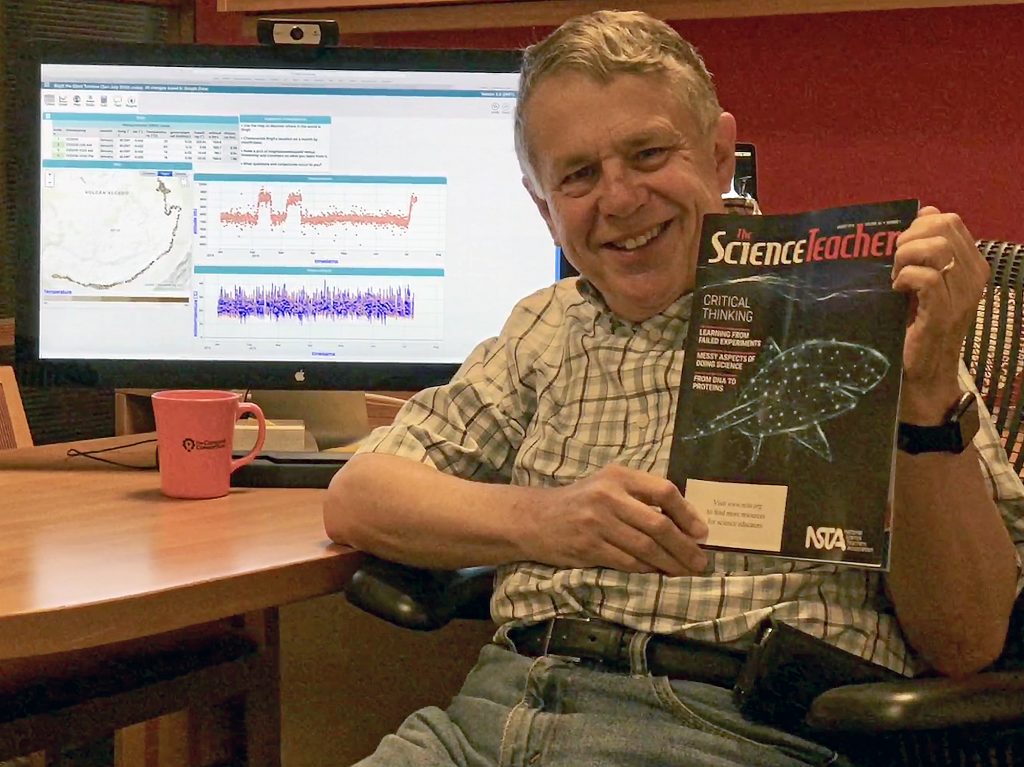Category: Tag: NGSS
The cover article of the August issue of The Science Teacher features an intriguing shiver of sharks, data about those sharks and other marine animals, plus the perfect way to get your feet wet with data analysis: Common Online Data Analysis Platform (CODAP) and Ocean Tracks. Bill Finzer, one of the authors of the Science […]
Eighteen states and the District of Columbia, representing more than a third of the U.S. student population, have adopted the Next Generation Science Standards (NGSS) since their release in 2013, and more are expected to follow. To make the most of NGSS, teachers need three-dimensional assessments that integrate disciplinary core ideas, crosscutting concepts, and science […]
Students in the Luquillo Schoolyard Project in Puerto Rico are jamming on data. Large, long-term environmental data! And our free, online tool CODAP (Common Online Data Analysis Platform) joined their Data Jam to help students visualize and explore data in an inquiry-oriented way. El Yunque National Forest, the only tropical rainforest in the U.S. National […]
At the Concord Consortium our goal is to prepare students to ask questions and use mental models to answer them. Students who develop this habit of mind early on will, we hope, become engaged and scientifically literate adults. And surely they will not lack for important questions to ask! Here’s an example: According to a […]
Are you attending the 2018 NSTA annual conference in Atlanta March 15-18? We’re leading 10 presentations at the Georgia World Congress Center (GWCC) and the Omni Atlanta Hotel at the CNN Center and one short course at the Westin Peachtree Plaza Hotel. Something for everyone, from modeling science in kindergarten to data science education. Join […]
Following the recommendation to incorporate the Next Generation Science Standards (NGSS) science and engineering practices in their classrooms, schools across the country are looking for ways to integrate scientific argumentation into their curriculum. Since 2012 the High-Adventure Science project in collaboration with National Geographic Education has offered free online modules for Earth and space science […]
In August 2017, Hurricane Harvey evolved from a series of thunderstorms to one of the first major hurricane landfalls in the United States since early 2005. Right on the heels of Harvey, Hurricane Irma blasted through the Caribbean and onto the U.S. mainland, striking Florida in early September. The National Oceanic and Atmospheric Administration (NOAA), […]
Assessments for several NGSS Performance Expectations in middle school physical and life sciences, featuring videos and simulations, authentic and engaging scenarios, interactive tools for modeling, and scaffolds and supports.
In June, Professor Silvia Wen-Yu Lee and her team at the National Changhua University of Education in Central Taiwan offered a 10-hour modeling curriculum to approximately 100 seventh grade students. Students used a new Chinese language version of SageModeler to model the relationship between marine biology and human activity in a unit about environmental conservation. […]
We are delighted to highlight the work of Erin Cothran from Hudson (Massachusetts) High School, for National Teacher Appreciation Day! Erin is teaching a 10th grade chemistry unit she developed based on the driving question, “How can something that can’t be seen crush a 67,000 lb. oil tanker made of half-inch steel?” The unit includes […]


